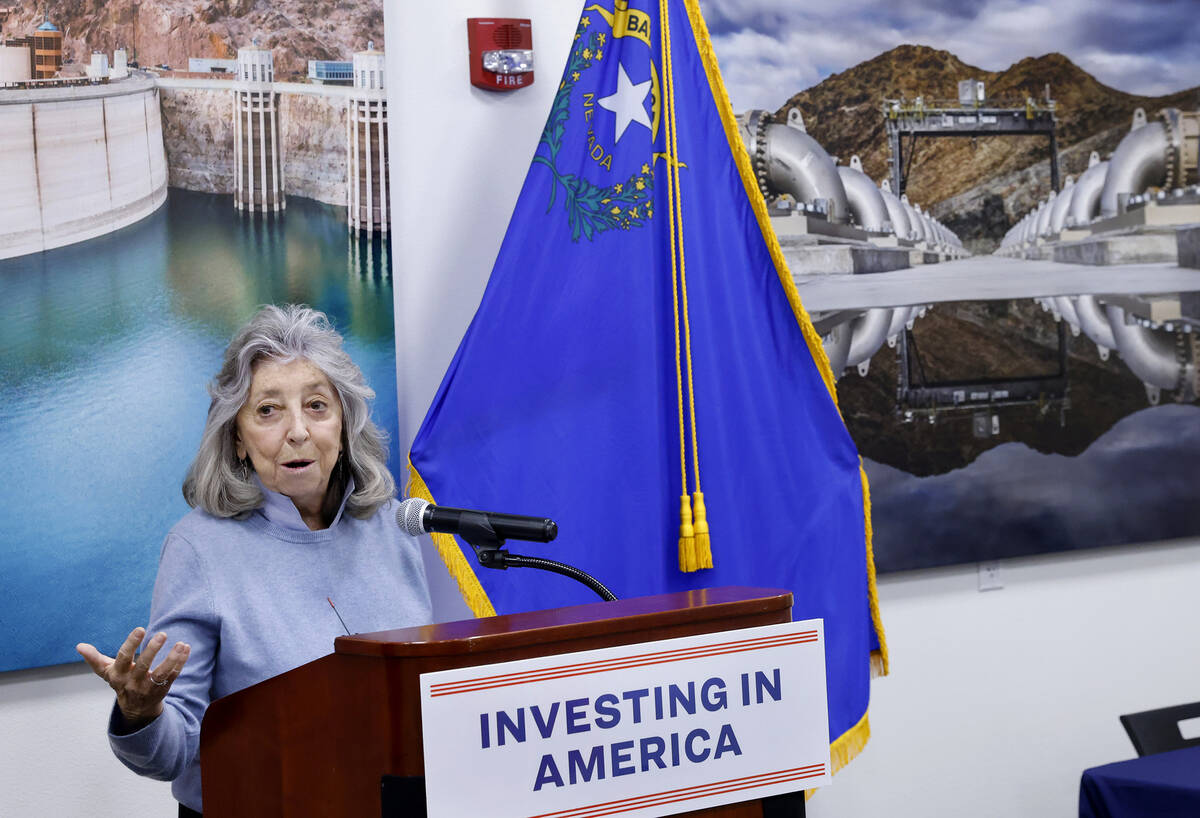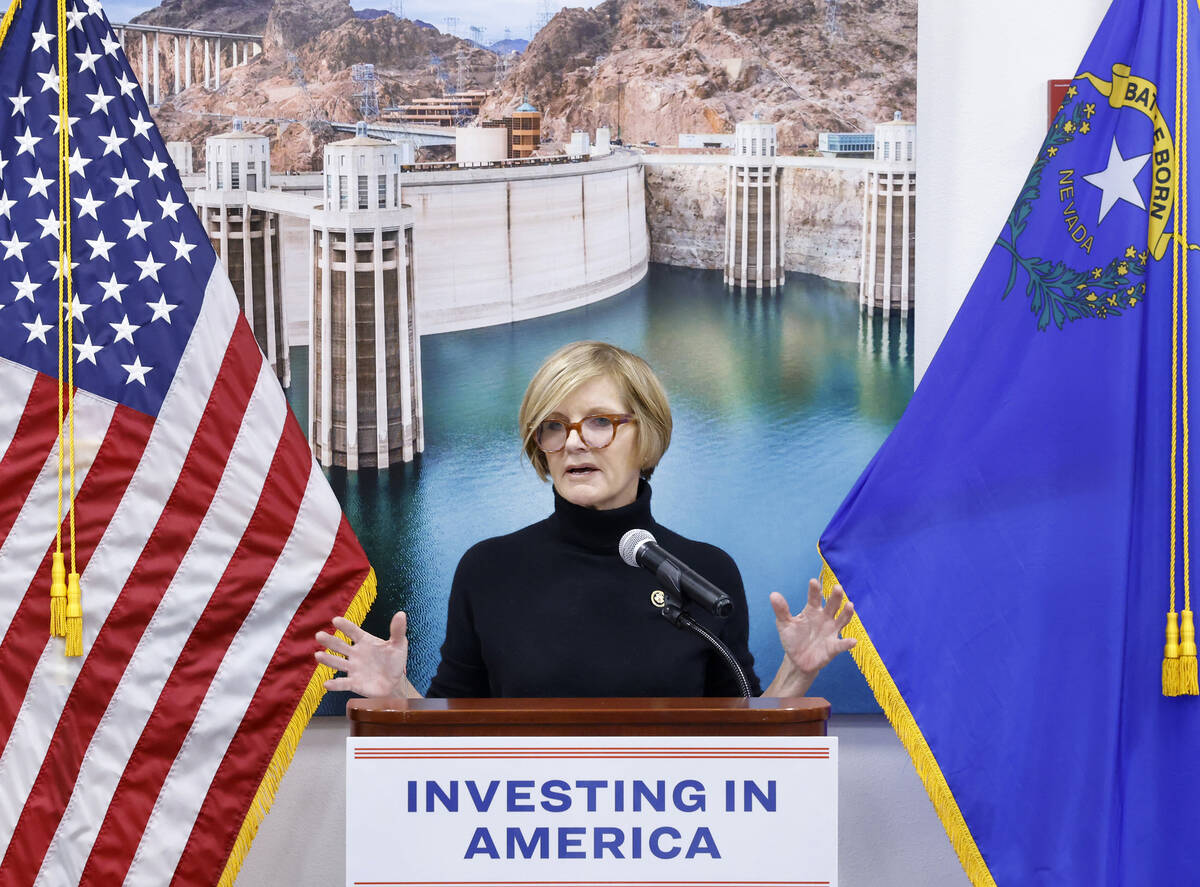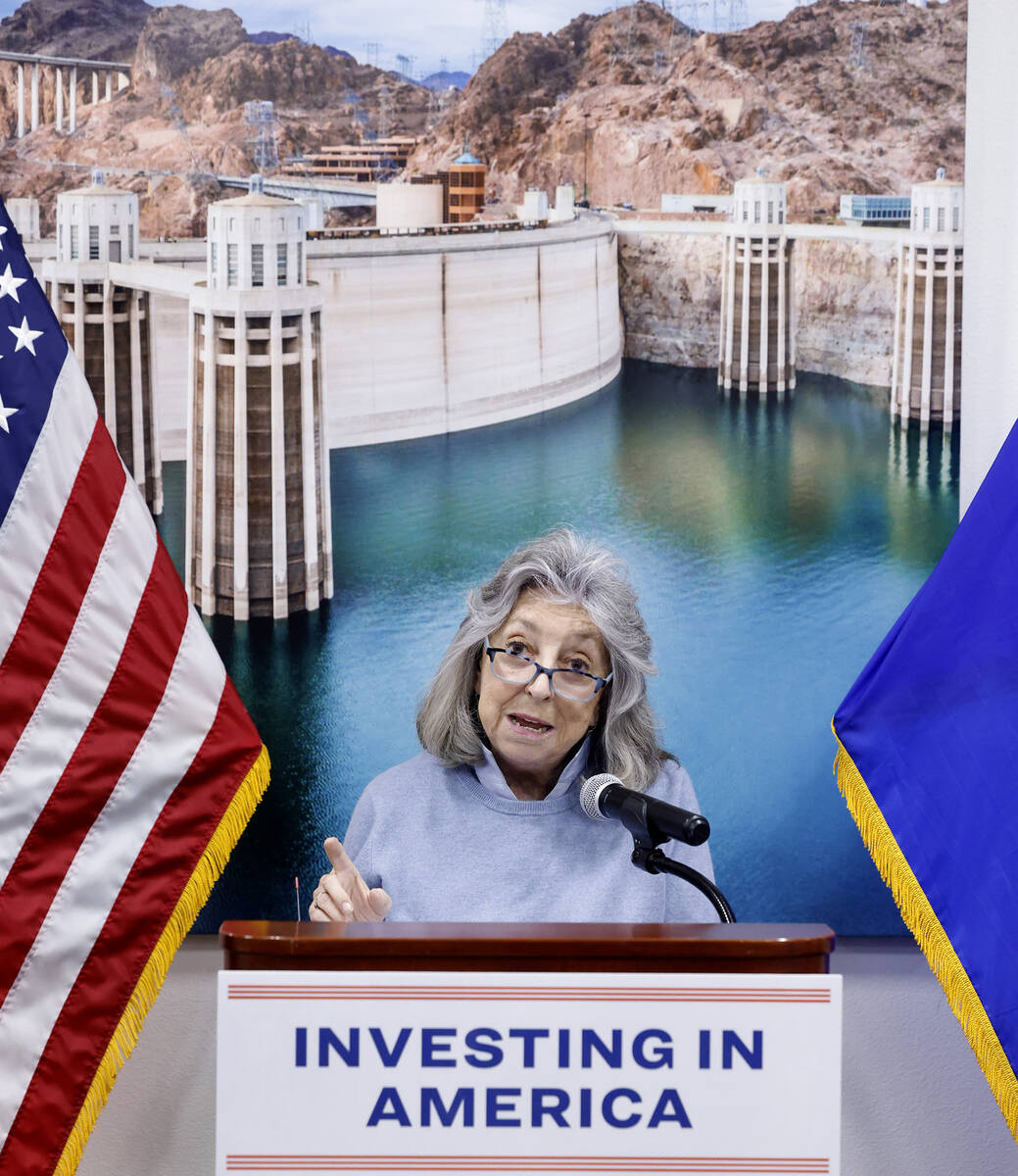Turf removal efforts in Las Vegas Valley get a big boost
An amount of water that exceeds Nevada’s annual usage of water from the Colorado River may be conserved because of a $60 million grant that officials announced on Friday.
In one of her final public appearances as commissioner of the Bureau of Reclamation, the federal agency tasked with managing water in the West, Las Vegas native Camille Calimlim Touton spoke of the new funding at the Las Vegas Valley Water District building alongside Reps. Susie Lee and Dina Titus, D-Nev.
“You want to know the proof of our work? Look in our backyard,” Touton said. “Lake Mead is 20 feet higher than it was 2½ years ago.”
She will no longer lead the agency once President-elect Donald Trump takes office later this month, though he has not yet selected her replacement.
The large share of money, only a fraction of the total $284 million that the Bureau of Reclamation doled out Friday, will support the Southern Nevada Water Authority’s Water Smart Landscapes Rebate program in removing 23 million square-feet of grass from the Las Vegas area.
Nevada law requires ‘nonfunctional’ grass to be removed
In 2021, then-Gov. Steve Sisolak signed a bill to mandate the removal of so-called “nonfunctional turf,” or grass considered decorative rather than functional, by the end of 2026.
The money the water authority gained has the potential to save 190,000 acre-feet of water, Touton said. Though Nevada can use up to 300,000 acre-feet a year, it only used 188,000 acre-feet in 2023. Preliminary water-use numbers for 2024 are not yet available, a water authority spokesman said.
The program allows homeowners to receive $3 per square foot of grass removed up to 10,000 square-feet and $1.50 per square-foot thereafter. Wide-scale turf removal across the valley hasn’t always been popular, however, with groups like the Water Fairness Coalition that lament how less grass may raise the valley’s temperatures, harming air quality and killing off historic trees by altering soil biology.
“Everyone is going to use less water, whether we decide it, whether a court decides it or whether Mother Nature decides it,” said Colby Pellegrino, deputy general manager of the water authority. “These funds allow us to continue to be proactive in addressing those problems.”
Titus: Musk’s DOGE could harm environmental progress
As President-elect Donald Trump takes office, the future of how water conservation on the Colorado River will be funded remains uncertain.
Trump has vowed to repeal any leftover funding from the Inflation Reduction Act — the 2022 law that’s considered to be the biggest federal investment in climate change mitigation in world history. Friday’s funding announcement comes from the law.
“We don’t want to see anybody from the DOGE Commission trying to claw any of this back, and we fear that environmental issues will be at the top of the list,” Titus said.
The comment was in reference to the newly formed Department of Government Efficiency, a task force aimed at reducing government spending led by Tesla CEO Elon Musk and ex-presidential candidate Vivek Ramaswamy. The Trump presidential transition team did not respond to a request for comment on the issue or Titus’ remark.
Lee, whose district includes Summerlin, Spring Valley and Laughlin, said she’s seen firsthand how the water authority’s program can allow homeowners to affordably contribute to the region’s water-saving efforts.
“It’s an opportunity to put money back in the pockets of Southern Nevada. I know this because I’ve implemented this program in my own backyard, and I have seen my water bill drastically reduced as a result,” she said.
Contact Alan Halaly at ahalaly@reviewjournal.com. Follow @AlanHalaly on X.






















